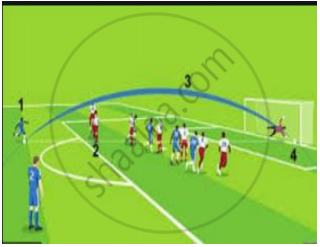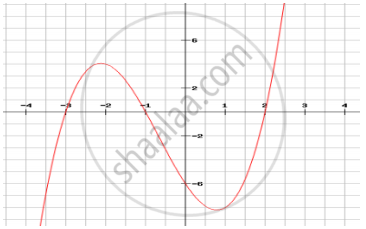Advertisements
Advertisements
प्रश्न
State division algorithm for polynomials.
उत्तर
If f (x) and g (x) are any two polynomials with `g (x ) ≠ 0 `then we can always find polynomials ` q(x)` and `r (x)` such that `f (x)= q(x)g(x)+ r(x)`, where `r (x) = 0` or degree r(x) degree g(x)
APPEARS IN
संबंधित प्रश्न
Classify the following polynomials as linear, quadratic, cubic and biquadratic polynomials:
`t^2+1`
If a quadratic polynomial f(x) is a square of a linear polynomial, then its two zeros are coincident. (True/False).
If f(x) is a polynomial such that f(a) f(b) < 0, then what is the number of zeros lying between a and b?
If α, β are the zeros of the polynomial f(x) = x2 − p(x + 1) − c such that (α +1) (β + 1) = 0, then c =
If f(x) = ax2 + bx + c has no real zeros and a + b + c = 0, then
Figure 2.23 show the graph of the polynomial f(x) = ax2 + bx + c for which

Which of the following is not the graph of quadratic polynomial?
The below picture are few natural examples of parabolic shape which is represented by a quadratic polynomial. A parabolic arch is an arch in the shape of a parabola. In structures, their curve represents an efficient method of load, and so can be found in bridges and in architecture in a variety of forms.




If the roots of the quadratic polynomial are equal, where the discriminant D = d2 – 4ac, then:
The below picture are few natural examples of parabolic shape which is represented by a quadratic polynomial. A parabolic arch is an arch in the shape of a parabola. In structures, their curve represents an efficient method of load, and so can be found in bridges and in architecture in a variety of forms.




The graph of x2 + 1 = 0
Basketball and soccer are played with a spherical ball. Even though an athlete dribbles the ball in both sports, a basketball player uses his hands and a soccer player uses his feet. Usually, soccer is played outdoors on a large field and basketball is played indoor on a court made out of wood. The projectile (path traced) of soccer ball and basketball are in the form of parabola representing quadratic polynomial.


Observe the following graph and answer.

In the above graph, how many zeroes are there for the polynomial?
